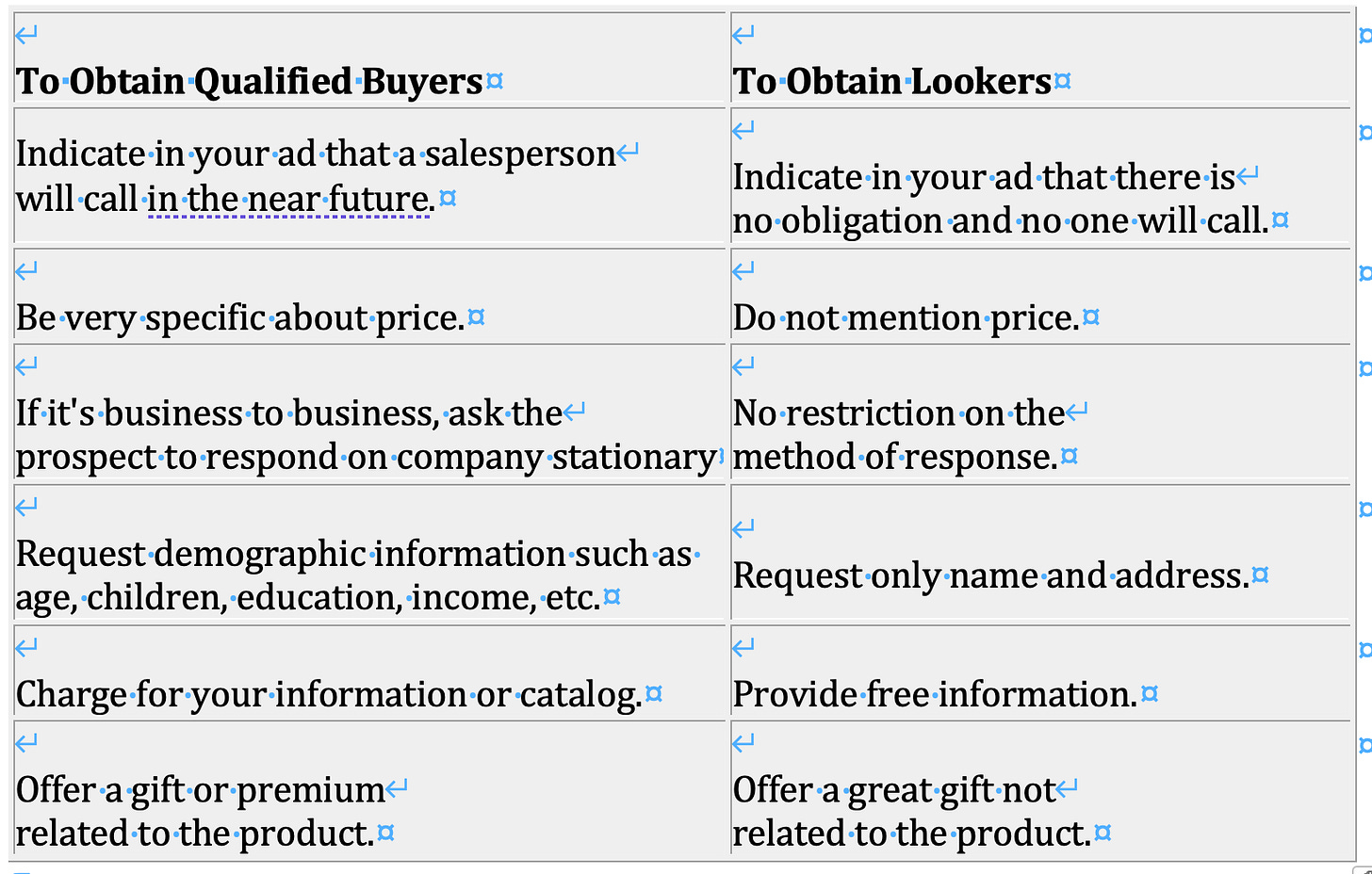How to Use a Two-Step Advertising Approach for More Sales
Just two small steps to higher profits and more customers
Photo by the blowup on Unsplash
I receive more email questions about how, where, what and when to advertise than all other questions combined.
It is by far the most challenging area of business to master because there are so many variables and unknowns.
In most small towns and markets, you're left to learn it on your own by trial and error. That's the main reason for this newsletter...to give you some direction.
We've all heard the adage, "Sell the sizzle, not the steak."
In the two-step approach, the "sizzle" is presented to the customer in some form of advertising benefits.
It could be direct mail, newspaper, radio, or whatever media reaches your target audience.
As I said above, they’re presented with the "sizzle" but the ad also suggests that if they respond to the ad in some way...There just might be some "steak" involved.
To those who respond to the ad a follow-up presentation is made to close the sale.
The Advantages of Two-step Advertising
The biggest advantage is the selection of qualified customers. Only serious buyers should respond to your advertising.
For example, with big ticket items you might offer to let the prospect sample the product in some way.
Car dealers have been using the "test drive" for years. Realtors show pictures of the homes listed and set appointments to "show" the house.
Are non-qualified buyers going to take test drives? Are non-qualified buyers going to tour homes for sale?
Of course. But in the long run with this form of advertising you will get more qualified customers than unqualified.
How To Word Your Ads to Produce Qualified Customers
When writing an ad, you want the customer to respond to, you need to word the ad in such a way as to discourage non-qualified buyers.
Here are some examples of how to do that.
Right now, some of you are cringing and saying, "I would never do that!" Well, maybe that explains a lot of why your advertising isn't working.
If you’re a regular on this newsletter tune out for a minute while I educate the new folks to the difference between "cost per thousand" advertising and "cost per customer" advertising.
You want your ad to be an investment, not an expense.
Media sales people always refer to advertising in cost per thousand. Here’s how many thousands of people our radio, TV, or newspaper reaches.
The problem is that thousands may not be listening when your ad runs. This makes cost per thousand moot.
If I buy an ad for $30.00 and it produces 2 — $10.00 sales...what happened?
What happened is, my advertising just cost me $10.00. It doesn't matter in the least what the "cost per thousand" of the ad was.
If the same $30.00 ad only reached four people and they each spent $10.00, what happened? My advertising is now an investment.
It paid for itself and produced a profit.
If the ad produces buyers, it's an investment. It produces more sales than the ad costs.
If the ad produces lookers who do not buy, your advertising becomes an expense.
The longer it’s an expense, the longer it takes for your business to become profitable.
Advertising must pay for itself. Period. Regular readers can come back now.
How To Measure The Two-step Advertising Approach
Another major mistake business owners make -- they have no idea how much revenue their ads are producing.
You must have a method for tracking the effectiveness of any advertising. This is another great thing about the two-step ad approach.
Because you’re asking for some kind of response to the ad it is easier to track the results it produces.
This in commonly called "keying your ad." If it's a coupon, you might put a code number on it.
For example, Bozeman Chronicle July 3rd might be BC7/3. If it's a phone call, "Ask for extension 102" or "When you call ask for Jim."
Since you have used the above ideas to write your ad you can identify where and when your ad was seen.
And the great thing is, the customer will never know you know. Here's how to tell.
How The Two-step Ad Approach Produces Sales
For example, using the table above, if a customer calls and says, "Does the 426 widget you advertised for $150.00 have reverse?", what does that tell you?
It tells you which ad they saw doesn't it? They’ve identified the product model and the price. Because you included those items in the ad.
Is price an issue to this caller? NO. If the price was a deterrent the call would have never been made.
What the caller is really trying to do is justify the expense. If the widget has reverse, that's a great deal. It's a bonus.
If it doesn't have reverse, that's the time to start asking questions and finding another need you can fill for this customer with the current widget or another model.
The point is you will have qualified customers calling you who are interested in your product or service. Take advantage of it.
The Last Word on The Two-Step Advertising Approach
There are always variations on any kind of advertising and this one is no exception.
You might use one media (a radio ad) to direct customers to a more detailed ad (the newspaper) about your big annual sale.
A third step might be a coupon in the newspaper ad with a discount at your store.
The bottom line in any advertising effort is always three-fold.
Advertising the right message, to the right people, with the right product and still be an investment not an expense.
Are your competitors using the two-step method? Try it. You'll be glad you did.





